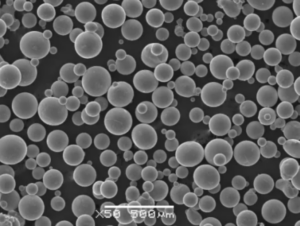Polvo de acero de alta resistencia es un material que desempeña un papel crucial en diversas industrias, desde la automovilística hasta la aeroespacial. Sus propiedades únicas, combinadas con los avances tecnológicos, han permitido a ingenieros y fabricantes crear componentes no sólo más resistentes, sino también más ligeros y duraderos. En esta completa guía, profundizaremos en qué es el polvo de acero de alta resistencia, su composición, características, aplicaciones y mucho más. Así que, tanto si es usted un profesional experimentado como si sólo siente curiosidad, quédese por aquí: éste va a ser un viaje informativo.
Polvo de acero de alta resistencia
El polvo de acero de alta resistencia es una forma de polvo metálico diseñado específicamente para ofrecer propiedades mecánicas excepcionales, como alta resistencia a la tracción, dureza y resistencia al desgaste y la fatiga. Este polvo se utiliza normalmente en técnicas de fabricación avanzadas como la fabricación aditiva (impresión 3D), la pulvimetalurgia y el moldeo por inyección de metales, donde su fina granularidad permite dar formas precisas y complejas.
Los polvos de acero de alta resistencia se producen mediante diversos métodos, como la atomización, que consiste en romper el acero fundido en pequeñas gotas que se solidifican en forma de polvo. La composición específica del polvo puede adaptarse para satisfacer las demandas de distintas aplicaciones, desde piezas de automoción muy duraderas hasta componentes aeroespaciales ligeros.
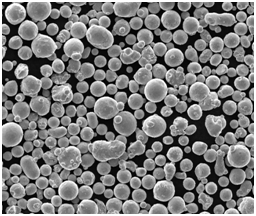
Tipos de polvo de acero de alta resistencia, composición, propiedades y características
| Modelo | Composición | Propiedades | Caracteristicas |
|---|---|---|---|
| HSLA-100 | Hierro, carbono, manganeso, níquel, cromo | Alta resistencia a la tracción y a la corrosión | Excelente para aplicaciones marinas, soldable |
| CPM 3V | Hierro, carbono, vanadio | Dureza excepcional, resistencia al desgaste | Ideal para herramientas de corte y piezas de desgaste |
| Maraging 300 | Hierro, níquel, cobalto, molibdeno | Alto límite elástico, buena soldabilidad | Adecuado para engranajes aeroespaciales y de alto rendimiento |
| 17-4 PH | Hierro, cromo, níquel, cobre | Alta resistencia, resistencia a la corrosión | Utilizado en la industria aeroespacial y química |
| Aermet 100 | Hierro, níquel, cobalto, cromo | Resistencia ultra alta, tenacidad a la fractura | Utilizado en trenes de aterrizaje, estructuras aeroespaciales |
| Acero para herramientas H13 | Hierro, carbono, cromo, vanadio | Gran tenacidad, resistencia a la fatiga térmica | Común en herramientas de fundición a presión y extrusión |
| S136H | Hierro, carbono, cromo | Gran dureza, resistencia a la corrosión | Utilizado en moldes de plástico, excelente pulibilidad |
| Acero martensítico envejecido M300 | Hierro, níquel, cobalto, molibdeno | Alta resistencia, buena ductilidad | Adecuado para aplicaciones de alta tensión |
| Acero para herramientas D2 | Hierro, carbono, cromo, vanadio | Gran dureza, resistencia al desgaste | Ideal para herramientas de estampación y conformado |
| PMD-100 | Hierro, carbono, molibdeno, níquel | Dureza y resistencia al desgaste equilibradas | Versátil para uso automovilístico e industrial |
Composición de Polvo de acero de alta resistencia
La composición del polvo de acero de alta resistencia se diseña cuidadosamente para conseguir propiedades mecánicas específicas. Entre los elementos comunes utilizados en estos polvos se incluyen el hierro, el carbono, el cromo, el níquel, el vanadio, el cobalto y el molibdeno. Cada elemento contribuye al rendimiento global del polvo:
- Hierro (Fe): El componente principal del acero, que proporciona la estructura de base.
- Carbono (C): Aumenta la dureza y la resistencia mediante la formación de carburos.
- Cromo (Cr): Mejora la resistencia a la corrosión y la dureza.
- Níquel (Ni): Mejora la dureza y la resistencia al impacto.
- Vanadio (V): Aumenta la resistencia al desgaste y la fuerza a altas temperaturas.
- Cobalto (Co): Mejora la estabilidad a altas temperaturas y las propiedades magnéticas.
- Molibdeno (Mo): Aumenta la resistencia y la templabilidad, especialmente a temperaturas elevadas.
Estos elementos se combinan en proporciones variables para crear polvos de acero que satisfagan las necesidades de aplicaciones específicas. Por ejemplo, un alto contenido de carbono aumenta la dureza, mientras que la adición de cromo puede mejorar significativamente la resistencia a la corrosión, haciendo que el polvo de acero sea adecuado para su uso en entornos difíciles.
Características del polvo de acero de alta resistencia
Los polvos de acero de alta resistencia se definen por su conjunto único de características, que incluyen:
- Alta resistencia a la tracción: Estos polvos están diseñados para soportar importantes fuerzas de estiramiento o tracción sin romperse.
- Resistencia a la corrosión: Muchos polvos de acero de alta resistencia son resistentes al óxido y otras formas de corrosión, lo que los hace ideales para su uso en entornos marinos o químicos.
- Resistencia al desgaste: Los polvos de acero de alta resistencia suelen utilizarse en aplicaciones en las que el material se enfrentará a un desgaste mecánico repetido.
- Resistencia a la fatiga: La capacidad de soportar cargas cíclicas sin fallar es crucial para los componentes que experimentan tensiones repetitivas.
- Dureza: Estos polvos pueden tratarse para alcanzar niveles de dureza muy elevados, lo que los hace adecuados para herramientas de corte y moldes.
- Ductilidad: A pesar de su resistencia, muchos de estos polvos mantienen una buena ductilidad, lo que permite moldearlos y darles forma sin que se agrieten.
Estas características hacen que los polvos de acero de alta resistencia sean indispensables en industrias donde la durabilidad, la precisión y la fiabilidad son primordiales.
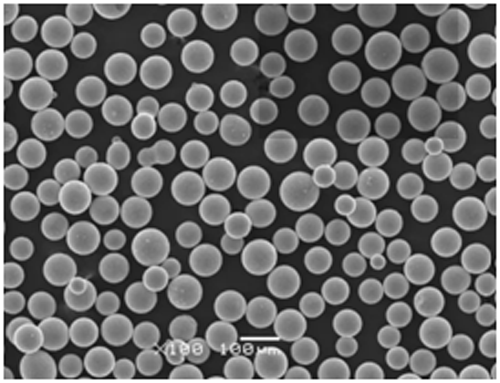

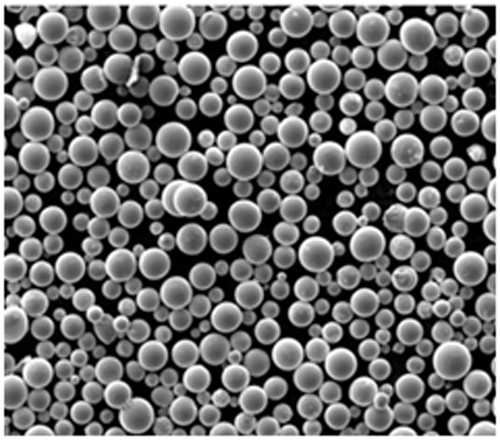
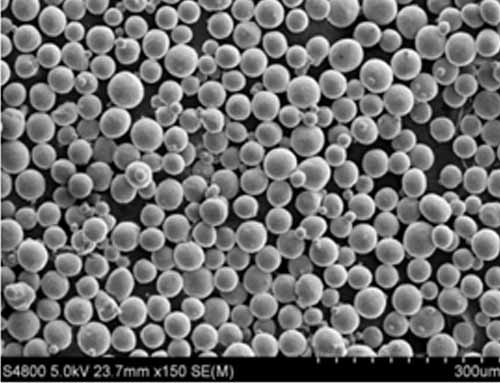
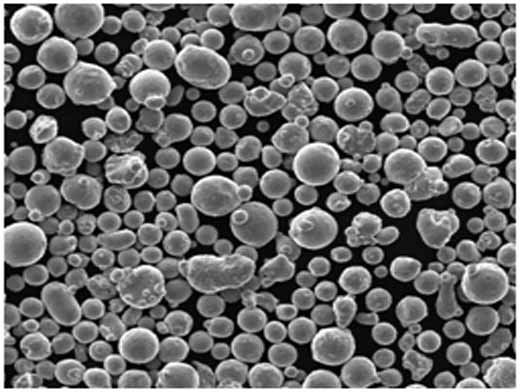
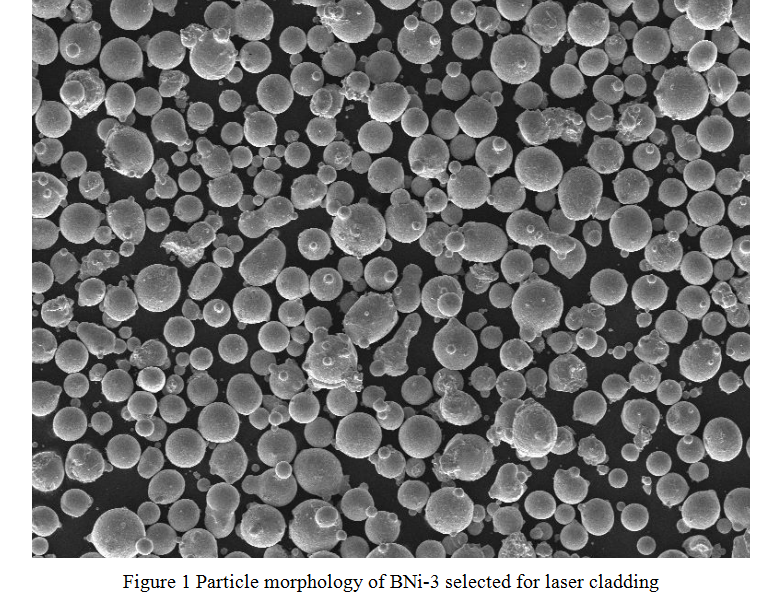
Aplicaciones del polvo de acero de alta resistencia
La versatilidad de los polvos de acero de alta resistencia permite utilizarlos en diversos sectores, cada uno de los cuales se beneficia de sus propiedades únicas. He aquí cómo se aplican estos polvos en distintos sectores:
Industria del automóvil:
- Componentes estructurales de alta resistencia: Se utiliza en la fabricación de chasis y piezas de carrocería ligeros pero resistentes.
- Piezas del motor: Proporciona resistencia al desgaste en componentes críticos como árboles de levas y engranajes.
Industria aeroespacial:
- Tren de aterrizaje: La gran resistencia y tenacidad de polvos específicos como Aermet 100 los hacen perfectos para componentes de trenes de aterrizaje.
- Componentes estructurales: Se utiliza en fuselajes en los que es esencial una elevada relación resistencia/peso.
Utillaje y moldeo:
- Moldes de fundición a presión: Los polvos como el acero para herramientas H13 son ideales por su resistencia a la fatiga térmica.
- Moldeo por inyección: El polvo de acero S136H es el preferido para moldes de plástico que requieren una gran capacidad de pulido y resistencia a la corrosión.
Aplicaciones marinas:
- Piezas resistentes a la corrosión: El HSLA-100 se utiliza habitualmente en estructuras navales debido a su excelente soldabilidad y resistencia a la corrosión del agua de mar.
- Equipos de perforación en alta mar: La combinación de fuerza y resistencia a la corrosión hace que estos polvos sean ideales para entornos marinos difíciles.
Maquinaria industrial:
- Piezas de desgaste: El polvo de acero CPM 3V ofrece una resistencia superior al desgaste, por lo que es adecuado para herramientas de corte y máquinas industriales.
- Engranajes de alta resistencia: Se utiliza en la fabricación de engranajes que requieren resistencia y durabilidad.
Productos sanitarios:
- Instrumental quirúrgico: La alta dureza y resistencia a la corrosión son cruciales en las herramientas médicas, por lo que los polvos de acero de alta resistencia son la opción preferida.
- Implantes ortopédicos: La biocompatibilidad y resistencia de ciertos polvos los hacen ideales para implantes de carga.
Aplicaciones y usos de Polvo de acero de alta resistencia
| Industria | Solicitud | Modelo/Tipo | Por qué se utiliza |
|---|---|---|---|
| Automotor | Componentes estructurales | HSLA-100 | Alta resistencia y ligereza |
| Piezas de motor | CPM 3V | Resistencia al desgaste | |
| Aeroespacial | Tren de aterrizaje | Aermet 100 | Resistencia y tenacidad ultrarresistentes |
| Componentes estructurales | Maraging 300 | Elevada relación resistencia/peso | |
| Herramientas y moldes | Moldes de fundición a presión | Acero para herramientas H13 | Resistencia a la fatiga térmica |
| Moldeo por inyección | S136H | Gran capacidad de pulido, resistencia a la corrosión | |
| Marina | Piezas resistentes a la corrosión | HSLA-100 | Soldabilidad, resistencia al agua de mar |
| Equipos de perforación en alta mar | Aermet 100 | Solidez, resistencia a la corrosión | |
| Maquinaria industrial | Piezas de desgaste | CPM 3V | Resistencia superior al desgaste |
| Engranajes de alta resistencia | Acero para herramientas D2 | Resistencia, durabilidad | |
| Productos sanitarios | Instrumental quirúrgico | 17-4 PH | Dureza, resistencia a la corrosión |
| Implantes ortopédicos | Acero martensítico envejecido M300 | Biocompatibilidad, resistencia |
Especificaciones, tamaños, calidades y normas
Comprender las especificaciones, tamaños, grados y normas de los polvos de acero de alta resistencia es esencial para elegir el material adecuado para su aplicación. A continuación encontrará una tabla detallada que resume estos aspectos.
Tabla: Especificaciones, tamaños, grados y normas de los polvos de acero de alta resistencia
| Modelo | Especificaciones | Tallas disponibles | Los grados | Normas |
|---|---|---|---|---|
| HSLA-100 | Resistencia a la tracción: 690 MPa | 5µm - 150µm | Grado 80 | MIL-S-16216K, ASTM A710 |
| CPM 3V | Dureza: 58-60 HRC | 10µm - 100µm | Grado A | ASTM A681 |
| Maraging 300 | Límite elástico: 1930 MPa | 20µm - 120µm | Grado 300 | AMS 6514 |
| 17-4 PH | Resistencia a la tracción: 1170 MPa | 15µm - 125µm | H900, H1025 | AMS 5643, ASTM A564 |
| Aermet 100 | Resistencia a la tracción: 2070 MPa | 10µm - 150µm | Grado 100 | MIL-S-46119 |
| Acero para herramientas H13 | Dureza: 50-52 HRC | 10µm - 90µm | Grado A | ASTM A681 |
| S136H | Dureza: 48-52 HRC | 5µm - 100µm | Grado S136 | DIN 1.2083, GB/T 1220 |
| M300 Maraging | Resistencia a la tracción: 2050 MPa | 20µm - 120µm | Grado 300 | AMS 6514 |
| Acero para herramientas D2 | Dureza: 55-62 HRC | 15µm - 110µm | Grado A | ASTM A681 |
| PMD-100 | Resistencia a la tracción: 750 MPa | 20µm - 130µm | Grado 100 | ASTM F75, AMS 5758 |
Proveedores y precios
Los precios de los polvos de acero de alta resistencia pueden variar considerablemente en función de la composición, la calidad y el proveedor. A continuación se comparan algunos proveedores habituales y sus precios.
Tabla: Proveedores y precios de los polvos de acero de alta resistencia
| Proveedor | Modelo | Precio por kg (USD) | Cantidad mínima de pedido (kg) | Opciones de envío |
|---|---|---|---|---|
| Polvos metálicos avanzados | HSLA-100 | $50 – $75 | 10 | Envío urgente a todo el mundo |
| Suministros SteelTech | CPM 3V | $80 – $110 | 5 | Nacionales e internacionales |
| Precision Alloys Inc. | Maraging 300 | $120 – $150 | 2 | Envío urgente disponible |
| Polvos metálicos Direct | 17-4 PH | $60 – $90 | 20 | Descuentos por volumen, envíos internacionales |
| Aerospace Materials Ltd. | Aermet 100 | $200 – $250 | 1 | Opciones de envío personalizadas |
| Soluciones en acero para herramientas | Acero para herramientas H13 | $70 – $100 | 15 | Sólo para uso doméstico |
| Polvos metálicos globales | S136H | $90 – $130 | 10 | Envío urgente a todo el mundo |
| Maraging Metals LLC | M300 Maraging | $140 – $180 | 5 | Envío urgente disponible |
| Polvos de acero industriales | Acero para herramientas D2 | $85 – $120 | 8 | Descuentos por volumen, internacional |
| PowderMet Inc. | PMD-100 | $55 – $80 | 25 | Envío internacional, descuentos por volumen |
Ventajas y limitaciones de los polvos de acero de alta resistencia
Los polvos de acero de alta resistencia ofrecen numerosas ventajas, pero también tienen ciertas limitaciones. He aquí un desglose:
Tabla: Ventajas y limitaciones de los polvos de acero de alta resistencia
| Ventajas | Limitaciones |
|---|---|
| Elevada relación resistencia/peso | Puede ser más caro que el acero tradicional |
| Excelente resistencia a la corrosión | Requiere procesos de fabricación precisos |
| Resistencia superior al desgaste | Puede necesitar equipo especializado para su manipulación |
| Versatilidad en todas las aplicaciones | Disponibilidad limitada de algunos grados específicos |
| Buena resistencia a la fatiga | La preparación y el almacenamiento del polvo pueden ser difíciles |
| Facilidad de aleación y personalización | Potencial de porosidad en piezas sinterizadas |
| Beneficios medioambientales en la fabricación | Reciclabilidad limitada de algunos polvos de alta aleación |

Preguntas más frecuentes
| Pregunta | Respuesta |
|---|---|
| ¿Para qué se utiliza el polvo de acero de alta resistencia? | Se utiliza en industrias como la automovilística, aeroespacial, de herramientas, naval y médica para piezas que requieren alta resistencia, resistencia al desgaste y resistencia a la corrosión. |
| ¿Cómo se fabrica el polvo de acero de alta resistencia? | Normalmente se produce por atomización, en la que el acero fundido se rompe en finas gotitas que se solidifican en polvo. |
| ¿Cuáles son las ventajas de utilizar polvo de acero de alta resistencia? | Entre sus ventajas se encuentran la alta resistencia a la tracción, la resistencia al desgaste y a la corrosión, y la capacidad de conformar formas complejas. |
| ¿Puede reciclarse el polvo de acero de alta resistencia? | Aunque algunos polvos de acero de alta resistencia pueden reciclarse, los que tienen composiciones de aleación complejas pueden plantear problemas. |
| ¿Es adecuado el polvo de acero de alta resistencia para la impresión 3D? | Sí, se utiliza mucho en la fabricación aditiva por su capacidad de producir componentes precisos y complejos. |
| ¿Cuáles son las calidades habituales del polvo de acero de alta resistencia? | Los grados más comunes son HSLA-100, CPM 3V, Maraging 300, 17-4 PH y Aermet 100, entre otros. |
| ¿En qué se diferencia el polvo de acero de alta resistencia del acero tradicional? | El polvo de acero de alta resistencia ofrece propiedades mecánicas superiores y flexibilidad en la fabricación, pero puede ser más costoso y requiere técnicas de procesamiento avanzadas. |
| ¿Qué industrias se benefician más del polvo de acero de alta resistencia? | Industrias como la aeroespacial, de automoción, naval, de herramientas y de fabricación de dispositivos médicos se benefician significativamente del uso de polvos de acero de alta resistencia. |
| ¿Cómo debe almacenarse el polvo de acero de alta resistencia? | Debe almacenarse en un lugar seco y a temperatura controlada para evitar la oxidación y la absorción de humedad. |
| ¿Cuál es el impacto medioambiental de la producción de polvo de acero de alta resistencia? | Aunque el proceso de producción puede consumir mucha energía, la capacidad de crear componentes más ligeros y resistentes puede suponer un ahorro energético global en aplicaciones como la automoción y la industria aeroespacial. |
Conclusión
Polvos de acero de alta resistencia constituyen una notable innovación en el campo de la ingeniería de materiales. Sus propiedades únicas los hacen indispensables en una amplia gama de industrias, desde la automoción y la aeroespacial hasta los dispositivos médicos y las herramientas industriales. Al conocer las distintas composiciones, características, aplicaciones y limitaciones, los profesionales pueden tomar decisiones informadas sobre qué polvo de acero de alta resistencia se adapta mejor a sus necesidades específicas.
El objetivo de esta guía es ofrecer una exploración exhaustiva de los polvos de acero de alta resistencia, arrojar luz sobre los matices de su uso y ayudarle a navegar por las complejidades de la elección del material adecuado para su próximo proyecto. Tanto si es usted fabricante, ingeniero o investigador, la información detallada que aquí se ofrece le será de gran utilidad.
Recuerde que, cuando se trata de materiales como el polvo de acero de alta resistencia, el diablo está en los detalles, así que tómese su tiempo, considere sus opciones y elija sabiamente.

